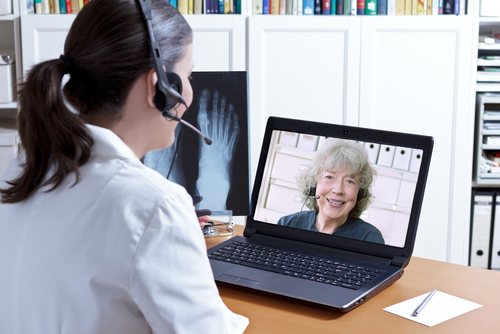Telemedicine has emerged as a tool that enables care providers to do more with less. Now, a shrinking physician talent pool can serve a growing rural patient base that cannot easily access services. Globally, healthcare organizations increasingly recognize the value of using telemedicine to deliver affordable, accessible care. Amidst a continually changing body of medical knowledge and technology advancement, the healthcare field is in a constant state of flux. Now, telemedicine helps care providers meet changing healthcare demands and share information with patients and peers.
The Demand for Technology Skills
Whether from mobile health devices or Excel sheets, telemedicine professionals will often need to sift through data to make appropriate decisions. Supplemental learning material can help with developing the skills required to work with these technologies. As the medical community transitions toward telehealth, professionals will have to familiarize themselves with technology. Online learning helps medical professionals explore new technologies and stay on top of developing trends, when and where they have time. Online, there are many resources that healthcare professionals can use to upskill. There’s an e-learning class for nearly every skill imaginable. As an example, medical professionals with prerequisite training can take the Udemy data analysis course to learn how to work with databases to discover opportunities for improvement. Udemy designed the platform for working professionals who need to fit continuing education into their busy lifestyles. Some Udemy courses are free, while others are available for a relatively nominal fee. There are some e-learning courses on the platform that cost as little as $9.99.
Upskilling for the Future of Telemedicine
Today, telemedicine provides patients with access to quality healthcare services. Resultantly, government officials have taken steps to ensure that medical professionals can maximize the full potential of telemedicine. According to the World Health Organization (WHO), 74% of member countries deploy some form of telemedicine. Also, 80% of surveyed organizations communicate with community constituents using social media. As patient demand and the cost of caregiving rises and organizations find they have fewer resources, telehealth is emerging as a solution to do more with less. Telemedicine offers more than the apparent benefits. For example, medical professionals can use eHealth technology to share lifesaving information. A study conducted by the Michigan Medical school in collaboration with the Ann Arbor Veterans Affairs Medical Center revealed that P2P video conferencing might have improved the mortality rate among 62,000 patients who were afflicted with liver disease. Now, a growing number of healthcare professionals embrace the idea of telemedicine, rather than conforming to the traditional model of providing service, where patients come to doctors. According to experts, the only other alternative is to send specialists to patients who cannot access services, which is costly and resource prohibitive. As a result, telemedicine has emerged as a solution to what was once an insurmountable problem.
Bringing Organizations up to Speed
In 2003, the University of Arizona Biomedical Campus in downtown Phoenix launched the Arizona Telemedicine Program’s T-Health Institute to offer telehealth training. Initially, the school was an experiment that researchers hoped would shape the classroom of the future. Now, many organizations take advantage of the institute’s facilities. The experiment has proven to researchers that telemedicine can transform the delivery of healthcare services and how professionals learn about medicine. Contrary to early reservations, the T-Health Institute facilitates mutual dialogue between participants, closely mimicking the live classroom environment. Over time, the institute has served as a resource that allows educators to meet the needs of students and surrounding regions. The school is also bridging the gap between the medical and legal communities. Lawyers, judges and public agency officials in the area now request a sounding board at the institute. In the online classroom, students appreciate having direct access to leading area professionals. Students, who usually wouldn’t have access to the school were it not for e-learning, can ask questions and receive immediate answers from experienced professional leaders. Also, the T-Health Institute improves the quality of care in rural areas by making learning resources available to healthcare professionals who work far away from medical hubs. Resultantly, the learning center is an invaluable resource for promoting quality of care in the rural regions that surround Phoenix. Researchers have proved a direct link between reduced costs and increased efficiency due to the deployment of eHealth services. Moreover, telehealth minimizes hospital stays and improves chronic disease management. Telemedicine will grow increasingly important as the nation’s healthcare talent pool continues to shrink while patient demand continues to rise. Healthcare advocates and influencers now believe that their peers must embrace telemedicine as a primary resource for meeting that demand, rather than a supplemental tool. The concept of telemedicine has come a long way from its origins – with a physician providing medical care over a telephone. Now, healthcare professionals and patients communicate through smartphones, email, wearables and other wireless devices. Today, more American seniors want to age in place. Traditionally, aging adults needed a live in caregiver to do so. Now, technology allows an aging population to receive top-quality care at home. As medical costs skyrocket and patients live longer while presenting a variety of illnesses, telehealth may serve as the only viable solution to meet their needs. Medical professionals who want to provide help where it’s needed can start by taking advantage of online courses and learning how to work with telehealth technology.

